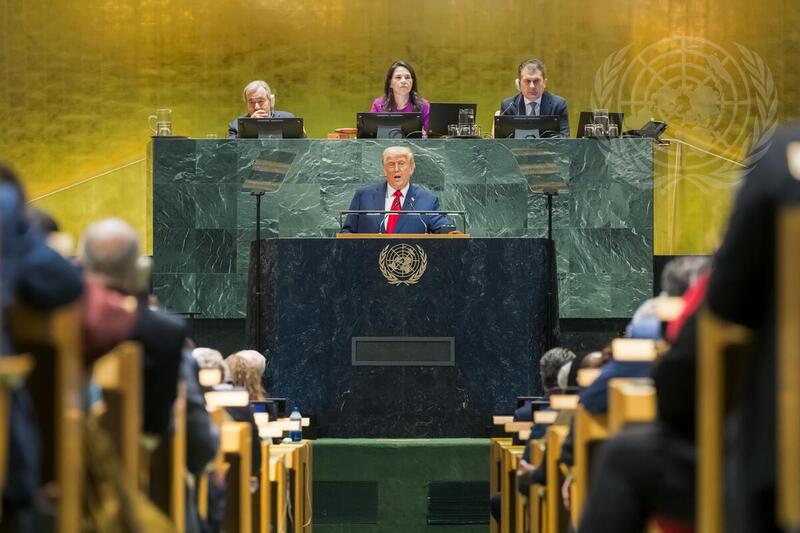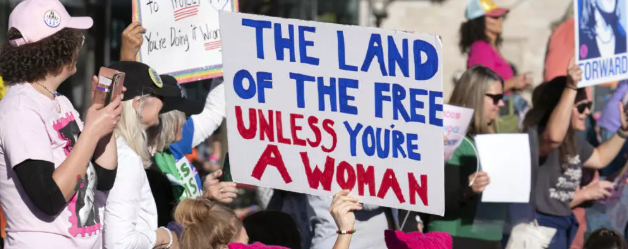c o m m e n t a r
y
After the Fall: The Argentine Crisis and Possible Repercussions
By David Felix | December 26, 2001
This commentary was commissioned and originally distributed
by the IRC’s Foreign Policy in Focus
(FPIF) project. It is reproduced here courtesy of FPIF. Foreign Policy
in Focus—A Think Tank Without Walls—can be accessed online at
http://www.fpif.org .
The inevitable has now happened. The strategy of the government of President de la Rua was to revive the sinking economy by re-attracting IMF credits and foreign capital. To appease the IMF and Wall Street, it chose to remain with a policy triad that had ceased to make sense. This was to defend at all costs a severely overvalued peso exchange rate, keep up full servicing of the oppressively large dollar debt, and balance the fiscal budget in the face of skyrocketing unemployment and falling production.
The frantic efforts of President de la Rua’s economic policy czar, Domingo
Cavallo, to implement the triad produced abject failure on all fronts:
debt default, a run from the peso that’s rapidly diminishing its value
in the exchange market, an expanding fiscal deficit, resounding nyets
from the IMF to requests for more credits, as well as from Wall Street
to requests to finance the rollover of the existing foreign debt on viable
terms, much less to finance new debt. A violent popular uprising drove
Cavallo and President de la Rua from office, leaving the economy in shambles
and the polity in crisis.
Inevitable? The failure was foretold not merely by academic critics,
including this writer, but more importantly by bond investors, who, by
1998 having come to see Argentina as over-indebted and the peso as overvalued,
began reducing lending to Argentina and upping the risk premia for holding
Argentine paper. More difficult to foretell is what the failure may bring.
But before offering prognoses, a brief review of what reduced Argentina
from poster child of the IMF and Wall Street during most of the 1990s
to pariah today may help lay out alternatives.
Argentina’s Road to Disaster
Argentina had been a poster child because—more avidly than any other
developing country—it had in the 1990s opened its financial markets
and privatized its public assets. These structural reforms were supported
by monetary reforms in 1991 headed by the "Convertibility Law,"
which froze the peso/dollar exchange rate and tied the peso money supply
tightly to the stock of hard currency reserves. To further gain Wall Street
confidence, the Argentine government in 1991 also announced a major foreign
policy shift from nonalignment to an all-out pro-U.S. position—"in
carnal embrace," Foreign Minister Guido Di Tella sardonically put
it.
Argentina was thus graded A+ by Wall Street and the IMF. European and
U.S. direct investment poured in to exploit the privatization opportunities,
giving the depressed economy a strong initial boost. And although such
inflows slackened by the mid-1990s as the stock of assets to be privatized
shrank, portfolio capital inflows kept rising, notably for the purchase
of Argentine dollar bonds. Pleased with the strategy, the IMF was quick
to protect it with emergency credits against the flightiness of portfolio
capital. The defense worked during the 1995-96 tequila crisis, but repeated
injections of credits failed to revive private capital inflows, or the
economy, following the 1998 Brazilian crisis. The strategy had reached
a dead end.
Essentially, the capstone of the strategy, the Convertibility Law and
the lifting of capital controls, had transmuted from magnet for foreign
capital to a millstone depressing the economy, and a repellent to foreign
capital. As the dollar rose after 1995 relative to the currencies of Argentina’s
chief trading partners—Europe and its Latino neighbors, notably Brazil—the
peso became severely overvalued. Badly squeezed, industrial exporting
declined and cheapened consumer imports displaced domestic production.
Industrial production stagnated while unemployment reached double digits.
Keeping the economy afloat by incurring additional dollar debt, albeit
with rising risk premia, worked for a while to cover the widening trade
deficits and expanding debt servicing. But with the overvalued exchange
rate holding down exports, it became evident that Argentina was headed
toward a "debt trap," in which each year’s debt service was
augmenting next year’s in an expanding series that was becoming unsustainable.
The bond markets hastened the denouement by raising risk premia on Argentine
bonds to levels that by 1999 effectively closed the market to Argentine
placements. Neither a 1999 IMF rescue package nor a much larger one in
December 2000 was able to reopen the international bond market to Argentine
placements on viable terms.
The dilemma for Argentina was that while devaluing and reducing foreign
debt servicing were essential for reviving the economy, capital decontrol
had encouraged a major buildup of private dollar debts whose servicing
costs would be substantially increased by a devaluation. Without capital
controls and big power financial support via the IMF or other channels
to minimize transitional turmoil, devaluation would be economically and
politically difficult to pull off. But such aid was rejected by Washington
and hence by the IMF. De la Rua had a possible political opening for changing
policy direction. His predecessor, Carlos Menem, had left office in 1999
pursued by charges of massive corruption and of having brought on the
recession and debt crisis by over-issuing dollar bonds to finance fiscal
deficits. The center-left coalition that De la Rua headed, which campaigned
on an anti-corruption and economic recovery platform, won decisively.
Could he have used this political momentum to repeal the Convertibility
Law and hard-bargain successfully with Washington and the IMF for transitional
help in scrapping the senseless policy triad? Quien sabe? The facts are
that after some initial dithering he chose to break with his coalition
and instead pursue the triad to the bitter end, which it has indeed been.
What May Come Next
The popular uprising has dramatically altered the political parameters
shaping economic policy. Three policy changes are now certain: default
on the dollar debt, a reversal of fiscal austerity, and exchange rate
depreciation. Meanwhile, formal dollarization, favored by conservative
Argentine economists and politicians as an alternative to devaluation,
is no longer in the cards. The Peronist party, which now controls the
Congress, and the interim president, Adolfo Rodriguez Saa, also a Peronist,
have pledged to suspend service on the dollar debt immediately, while
negotiating a "haircut" with the bondholders, i.e., a permanent
write-down of at least 30% of the debt.
Complete suspension on the $155 billion of federal and provincial dollar
debts would release around $28 billion for emergency job and other social
programs in the coming year. But complete suspension is unlikely, since
at least $64 billion of the dollar debt is held by local banks and privatized
pension funds formed to replace the national pension system. Among Cavallo’s
last acts was to force these institutions to accept a replacement of their
federal bond portfolio with lower interest rate issues, which weakened
their cash flow. Suspending payments on these bond holdings would risk
driving many into insolvency, deepening the domestic financial crisis
and probably setting off another popular explosion. It’s a risk the new
government will no doubt squirm mightily to avoid. Initially at least,
payment suspension will only release some fraction of the $28 billion
debt service of 2002 for funding fiscal outlays on the proposed emergency
programs.
As for devaluation, Rodriguez Saa’s confusing pronouncements increase
the likelihood that it will be disorderly. He opposes repeal of the Convertibility
Law because devaluing the peso lowers real wages; and instead he proposes
to issue enough of an inconvertible new currency, the Argentino, to nearly
double the domestic money supply. Some financially strapped provinces
had already issued a similar currency, lecops, to make wage payments.
These now circulate at a substantial discount from face value, so that
workers paid in lecops have already been taking a real wage cut, and have
responded with mass protests. Lecops also have had a "Paul paying
Peter to rob him" effect on fiscal revenues. They circulate between
firms at substantial discounts primarily to cut their tax bills, since
they are accepted at face value for payments to provincial and federal
governments. Issuing Argentinos in massive amounts would further cut fiscal
revenue as well as real wages.
Rodriguez Saa’s confusing monetary pronouncements probably reflect demagoguery
rather than economic illiteracy. The Convertibility Law still has backers,
notably among businesses and households with heavy dollar-denominated
liabilities, whom the Peronists are fearful of antagonizing. They are
also reported to be exploring ways of imposing "haircuts" on
private dollar debts, to ease the pain of devaluation on debtors. But
the demagoguery increases the likelihood that bringing the exchange rate
to a lower, but stable level will be a disorderly, drawn-out process.
The Convertibility Law, however, is well on its way to desuetude. The
flight to the dollar by Argentines has reduced the dollar reserves of
the central bank below its stock of peso emissions, putting it in violation
of the currency convertibility law. In the foreign exchange market the
forward rate on the dollar has reached 1.65 pesos. To enforce the Convertibility
Law, the Peronist government should now be planning to reduce rather than
expand the domestic money supply. The demagoguery about preserving the
law merely implies that it will die by neglect rather than by formal repeal.
Formal dollarization as an alternative to devaluation can also be ruled
out. The peso would have to be devalued for the central bank’s diminished
dollar reserves to be adequate to buy up its peso emissions. Augmenting
central bank reserves with new IMF and/or G-7 dollar loans could rule
in dollarization. But Washington, and thus the IMF, remain firmly opposed
to more lending to Argentina unless it first imposes more austerity measures
to reduce the fiscal deficit. Dollarization proponents now suggest: devalue
first and then dollarize. But that fallback has no appeal to the Peronists
now in control, since dollarization would curb the financing of their
expansionary fiscal programs. It could become an active option, were repercussions
from economic revival efforts to produce an explosive inflation and financial
chaos sufficient to bring a rightist regime to power by ballot or bullet.
The Bush II administration and the IMF are comfortable with their tough
love rejection of Argentina’s carnal embrace because they are persuaded
the immediate global repercussions from Argentina’s default will be minimal.
The reasoning is that in contrast to the Asian crisis, the default, so
long in coming, has given creditors ample time to take protective measures.
However, this optimism may underestimate repercussions via slower channels
of contagion.
One is that a sovereign bond default in each of the past three years,
with the latest, Argentina’s, being also by far the largest, plus the
hardening of the IMF’s bailout terms has been a red flag to the international
financial markets. The IMF reports that net bond flows to developing countries,
which had fallen to zero after 1998, turned negative after mid-2001, and
that syndicated bank loans, which are mainly directed to large private
firms of developing countries, have taken a similar downward path. Latin
American and Asian countries burdened with large hard currency debts are
facing hardening terms for rolling over or adding to their debts. And
compared to the 1997 Asian crisis, promoting exports to offset the higher
debt service has been encountering tougher going. Their major markets,
the industrial countries, are all in recession, and the U.S., erstwhile
global importer of last resort, is now turning again to selective protectionism.
The terms of trade of exporters of primary materials and low technology
industrial commodities have been deteriorating, and increasing export
promotion will intensify the deterioration. Unless the industrial countries
recover soon and strongly from their recession, export-led growth promises
to be impoverishing for most developing countries.
The direct trade effects of the Argentine peso devaluation will not be
important globally, but would be locally. Argentina is a large enough
trading partner with Brazil, Chile, and other neighboring countries for
a large real devaluation of the peso to significantly impact their economies.
The negative impact would be reinforced were the Peronist government to
follow Cavallo’s lead in imposing higher tariffs on imports from its Mercosur
partners, notably from Brazil. Alternatively, the Peronists might try
to build up regional import substitution as a partial substitute for export-led
growth by promoting the revival and further strengthening of Mercosur.
Success in that effort could have a positive regional impact, but a more
contentious global one as well, since it would undercut the U.S. drive
for free trade and free capital movements.
A third contagion channel is political. If Argentina’s new economic strategy
of debt default, expanded public expenditure and more protectionist inward-oriented
growth were to bring about a sustainable economic recovery, the strategy
would gain popular appeal in other debt-ridden developing countries as
a viable alternative to their troubled free market, export-led growth
with its heavy dependence on volatile foreign capital.
This presents the Bush II administration with a Hobson’s choice. It could
hang tough on no emergency loans to Argentina, re-enforced perhaps by
a hard line in the forthcoming debt renegotiations, in order to raise
the probability of failure for Argentina’s breakaway from neoliberalism.
That would also increase the risk that the resulting economic chaos could
produce political chaos and a return of the jackboots. It would also increase
opposition within the IMF directorate to U.S. dominance of IMF policy
toward the developing countries, which could further erode the institution’s
usefulness to the U.S. as a key instrument for globalizing neoliberalism.
The French, Italian, and Spanish governments are publicly demanding IMF
financial aid to Argentina. The alternative for the Bush II administration
is to retreat from hardline unilateralism to softer Clintonism; i.e.,
help Argentina financially in hopes of modifying its policy breakaway,
protecting Argentine democracy, and easing tensions within the IMF. Which
will be the choice? At this date, quien sabe?
(David Felix < felix@wueconc.wustl.edu >
is Professor Emeritus at Washington University.)
This commentary is a product of the Interhemispheric
Resource Center’s Global Affairs
and Americas Programs .
All rights reserved.
Recommended citation: “After
the Fall: The Argentine Crisis and Possible Repercussions,” Americas Program
Commentary, (Silver City, NM: Interhemispheric Resource Center, December
26, 2001).
Web location: http://www.americaspolicy.org/commentary/2001/0112argentine.html



